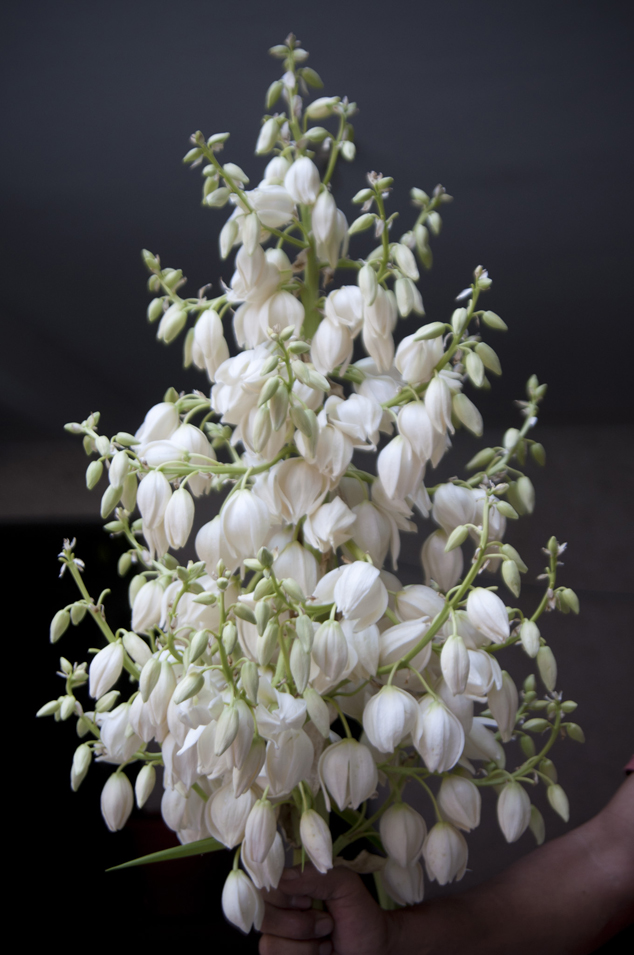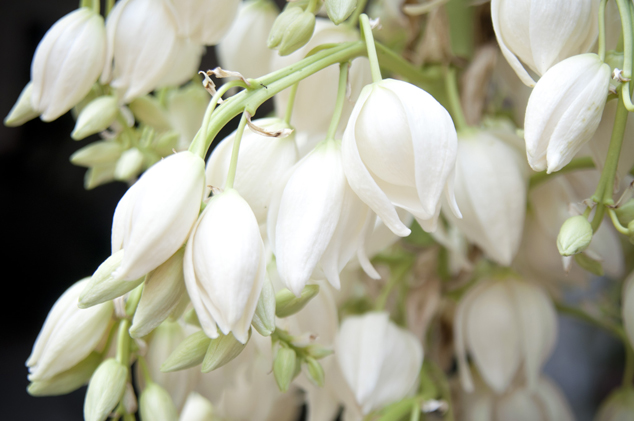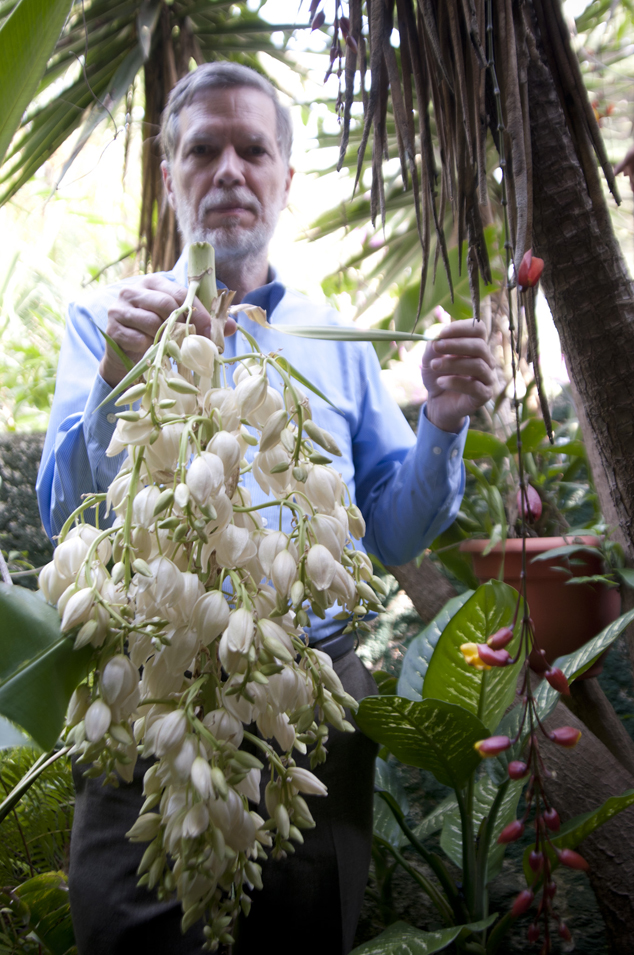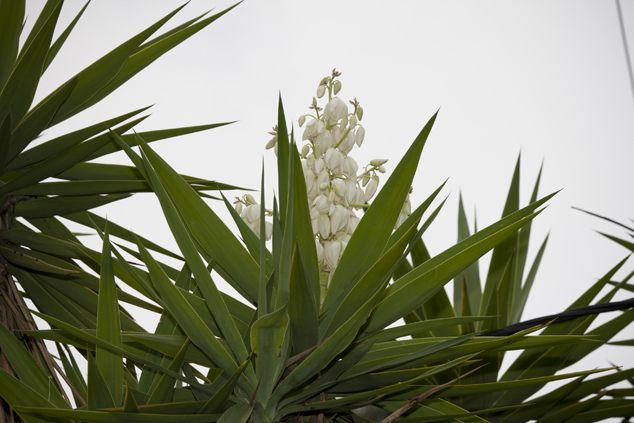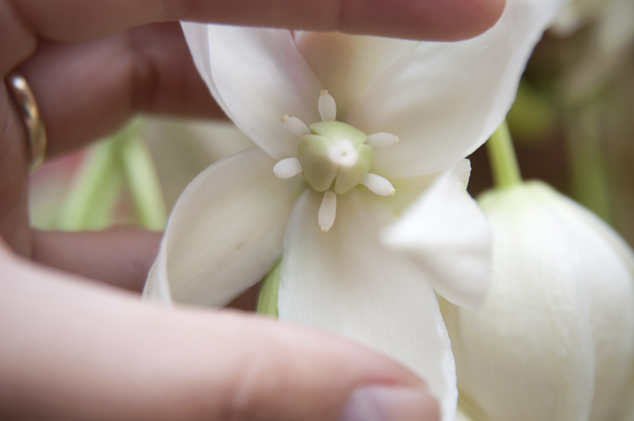Also known by the scienific name of Yucca guatemalensis . It is a shrub 3-10 m high, bark rough, thickened at the base. Creamy white flowers, so campanulate.
Izote, yucca flower: many flowers in Guatemala are edible
In today’s modern world of food from Fortune 500 name brands, not many of us eat flowers. We may raise flowers in our homes and gardens, but we don’t eat them.
I eat my flowers. Indeed when I harvest my flowers several of the neighbors come over and ask if they can have some of our harvest so they can eat them. This is the yucca flower, the izote.
This yucca is actually a shrub. It is very common. The shrub can grow to the height of a two storey building easily (albeit slowly).
Izote flowers (edible part), Photo by Nicholas Hellmuth
Close up Izote flowers (edible part), Photo by Nicholas Hellmuth
Nicholas Hellmuth at flaar office holding a izote flower recently cut from the garden.
Where do you find flor de izote?
Izote is found almost everywhere: humid Peten lowlands and dryer highlands of Guatemala, and everywhere in between. Izote is a very common plant around homes, in gardens, and as a living fence.
Izote is the national flower of El Salvador and a popular edible palm flower in Guatemala.
Izote flowers are readily available in native markets in many areas of Guatemala.
This year (2011) my izote bloomed in late May and June.
Also grows at elevations from 0 to 2500. In general flowering was observed from March to June. The plant is multiplied by seeds, cuttings and shoots. Tolerates dry, sandy soils, high temperatures and requires little irrigation. (Chízmar, 2009)
In addition to culinary uses this species is used as an ornamental plant living fence, as well as the decoction of the flowers are used as a diuretic. It is popular for its foliage and because it is easily propagated and tolerates arid conditions. From the center of the leaves, very young leaves (called candle) are extracted and used as a remedy for coughing. The inner part of the trunk is used in a decoction to treat kidney problems. (MacVean, 2009)
Close up Izote flowers (edible part), Photo by Nicholas Hellmuth
Insideparts of Izote flowers, Photo by Nicholas Hellmuth
Growing izote in your garden
Izote grows slowly but is difficult to kill! Just cut off a piece and stick it in the ground. It will continue to grow and eventually take root. This year we harvested the flowers in front of our house. This involved cutting off the top of the tree (don’t worry, just below the cut will sprout many times and all grow back).
The flowers we gave to the neighbors to eat after we photographed the flowers. The rest of the piece we had cut off we planted. One week later more flowers began to issue from the piece! Evidently there were potential flowers that we did not notice.
So the entire “stick” was “growing” healthily even though it had no roots whatsoever. The flower buds went rather quickly through the blooming process. Perhaps this happened since the rainy season was starting. Once it starts to rain in the Highlands of Guatemala, all the plants are pretty happy (as am I to see everything burst with green energy).
My izote grows well in both full sun and shade, though I would estimate it wants relatively good sun to bloom.
BIBLIOGRAPHY
CHIZMAR FERNANDEZ, Carla
2009 Plantas comestibles de Centroamerica. Instituto Nacional de Biodiversidad, INBio, Costa Rica. 360 pages.
MacVEAN, Ana Lucrecia
2006 Plantas utiles de Solola. Universidad del Valle de Guatemala. 222 pages.
2009 Plantas de los bosques montanos. Universidad del Valle de Guatemala. 177 pages.
First posted 1 August 2011


